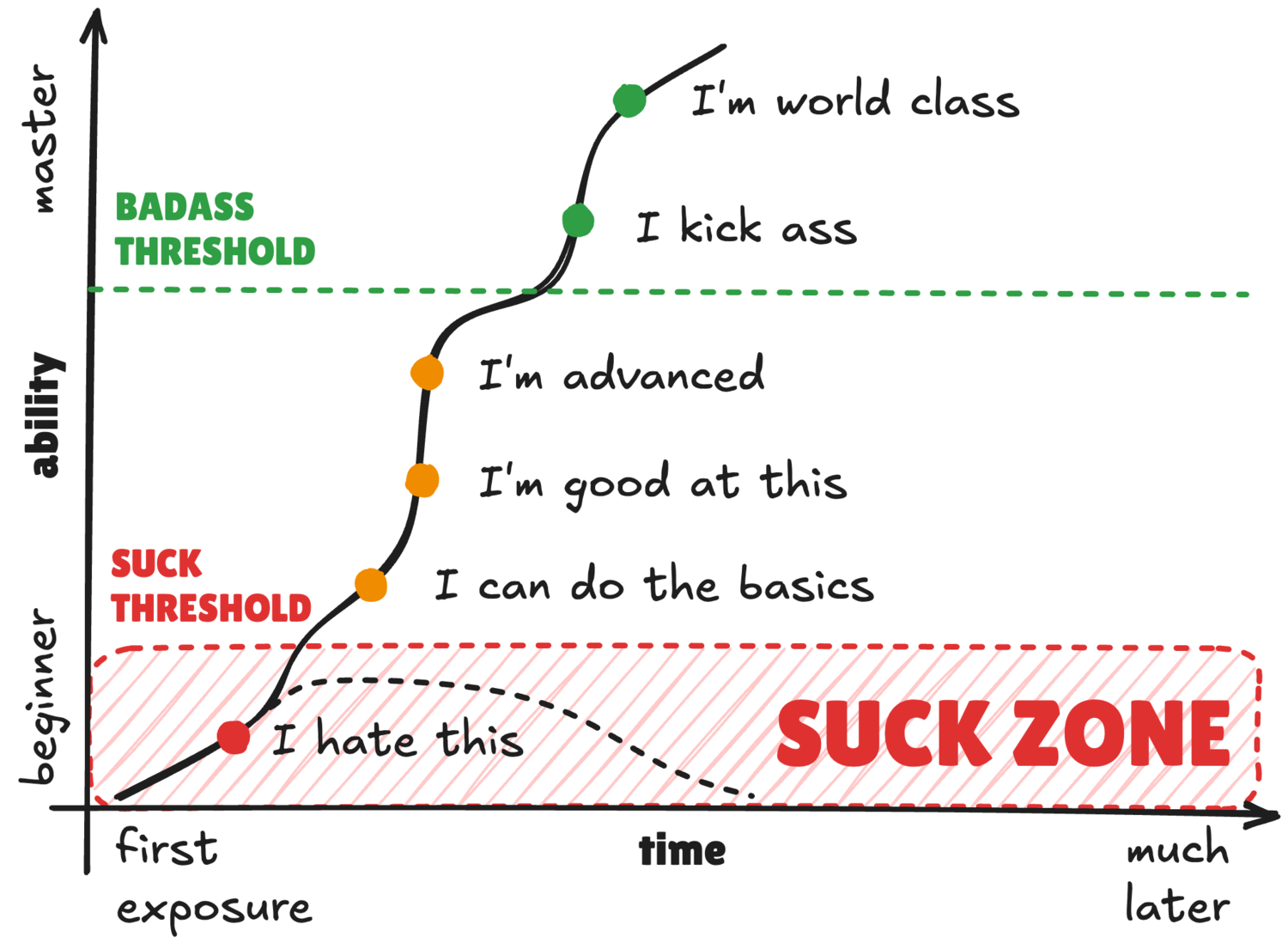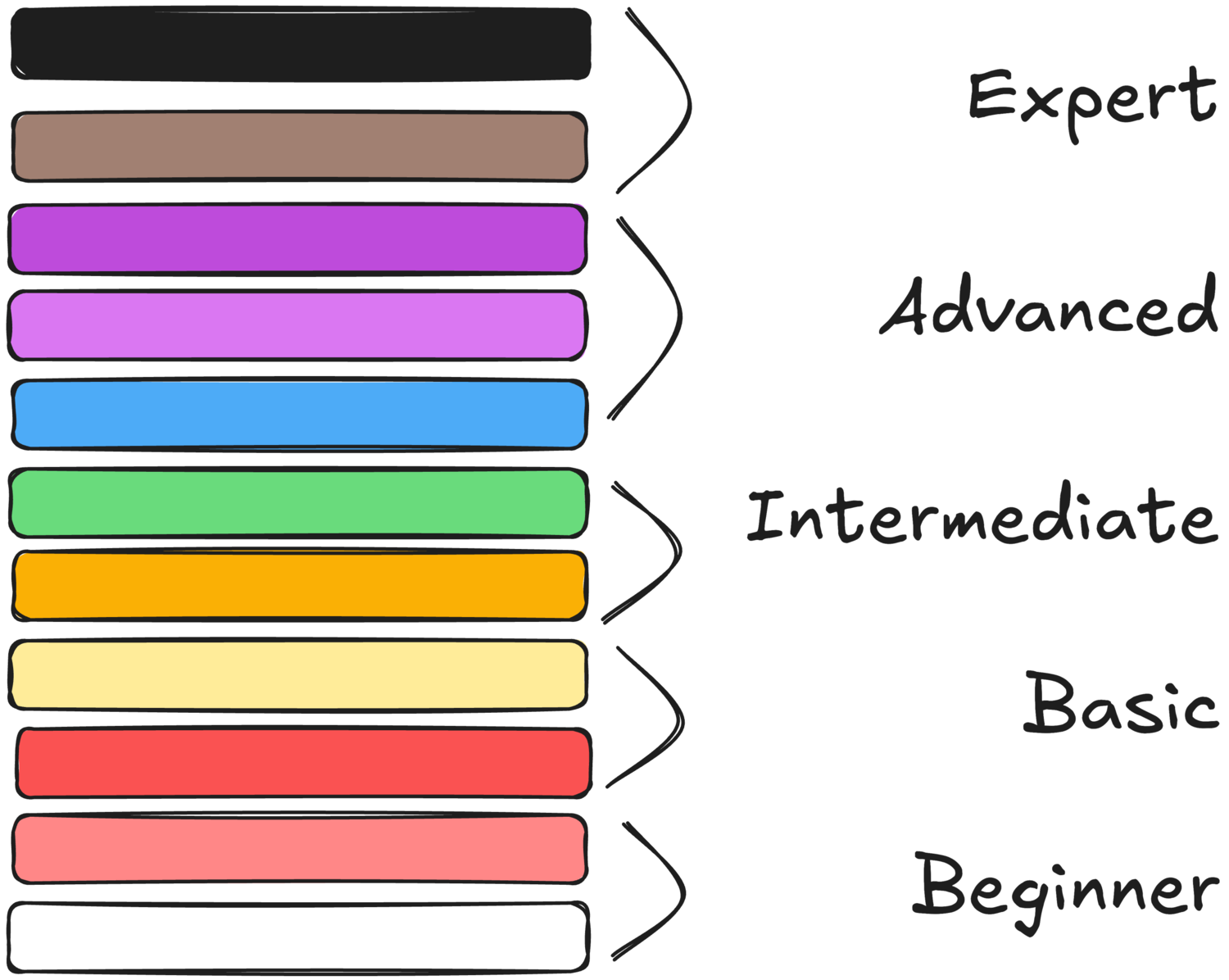Performance Path Map
A Performance Path Map is a sequence of key skills users need to acquire on the path from a beginner to an expert in a specific domain. The map is useful as a design aid and a prioritisation tool for product management. It is also useful a motivator for users, helping with customer retention and turning advanced users into active promoters.
Kathy Sierra described the idea of a Performance Path Map in the book Badass, where she claims that it’s a “key to user motivation and progress”. Sierra presents two key thresholds users cross on the path to mastery:
- The Suck Threshold is the boundary between users who are unable to do the basics, and people who feel competent enough to complete basic tasks (to escape the Suck Zone).
- The Badass Threshold is the boundary between users who feel that they are competent enough to do advanced tasks and experts (those who feel they “kick ass”).
Crossing the first threshold helps to retain users. Crossing the second threshold turns competent, satisfied users into active promoters.

(open the image in a new tab)
According to Sierra, users discover products when they are motivated to use them in a wider, compelling context, in order to create or solve something that addresses their needs. People keep using products when they feel that they are doing something valuable, and feel skillful. Sierra points out that people keep using a product not because the product is awesome, but because the people feel awesome by producing meaningful outcomes. People can get demotivated if they perceive that the work required to achieve something meaningful is too difficult, or when they do not sense that they are making progress. To help users stay motivated, Sierra suggests mapping out a progression of skills, akin to a belt system common in martial arts, and helping users figure out where they are on that list and how to get to the next level. Such a map can show users that some initial struggle is temporary (and perhaps even typical), and provides clear guidelines to help people improve new skills and achieve better outcomes.
What does a Performance Path Map look like?
According to Sierra, an ideal Performance Path Map shows:
- clear steps of progression from beginner to expert
- a way for people to self-assess where they are relative to the full map
- a credible reason to believe the skill improvement steps work, and confidence that they can work without special talent or luck

Sierra suggests that just knowing a performance path map exists is a strong motivator, as a credible path boosts confidence that users can improve their skills.
The map should shows mastered skills, not topics to learn (“a performance path map is about what you do, not what you learn”, says Sierra). In addition to the map, Sierra suggests giving users ideas and tools to help them use their skills early and often.
How to create a Performance Path Map?
To create a performance path map, Sierra recommends making a list of key skills, then ordering them from basic to expert, and grouping those skills into several chunks. Lower level skill groups should be achievable in far less time than the higher, advanced levels. Sierra suggests that each level should take roughly double the time and effort of the previous level.
Sierra does not reference any specific scientific research to back the claims that improved performance turns detractors into active users, or active users into active promoters. However, the Technology Acceptance Model is consistent with those claims and it was validated through rigorous research. One potential way of checking if a Performance Path Map contains the right skills is to compare users from different stages with the TAM and mTAM surveys. Stages above the Suck Threshold should score higher than stages below that threshold on the on the original TAM survey, and stages above the Badass Threshold should score higher than stages below the threshold on the mTAM survey.
Learn more about the Performance Path Map
- Badass: Making Users Awesome, ISBN 978-1491919019, by Kathy Sierra (2015)